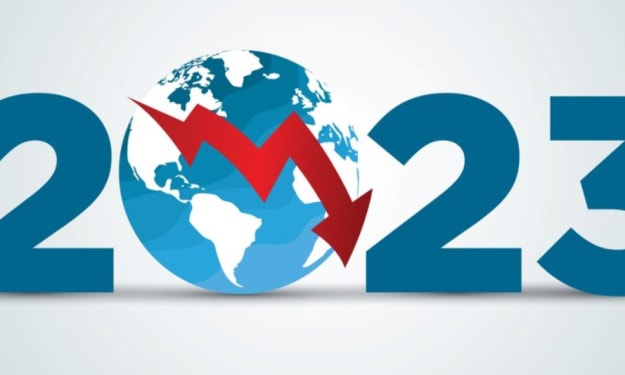The Rise and Fall of Silicon Valley Bank: A Cautionary Tale
Lessons on the Risks of Overreliance and the Importance of Regulation in the Tech Industry

Introduction
Silicon Valley Bank (SVB) was founded in 1983 with a mission to serve the unique needs of the technology industry. Over the years, SVB became a dominant player in the banking world, providing financial services to thousands of tech companies and startups in the Silicon Valley region and beyond. However, in recent years, SVB has faced a series of setbacks that have caused its stock price to plummet and its reputation to suffer. The rise and fall of Silicon Valley Bank is a cautionary tale for financial institutions and the tech industry alike. This article will examine SVB’s history, its successes and failures, and the lessons that can be learned from its experience.
The Rise of Silicon Valley Bank
SVB’s rise to prominence began in the 1980s, when it was founded by a group of entrepreneurs who recognized the need for a bank that specialized in serving the unique needs of the tech industry. At the time, traditional banks were hesitant to lend to tech startups, which were considered high-risk ventures. SVB saw an opportunity to fill this gap in the market by offering customized financial services to tech companies.
SVB’s approach was simple yet effective: it offered tech companies loans and lines of credit based on their potential for growth, rather than their current financial standing. This allowed SVB to invest in promising startups that were overlooked by other banks. Additionally, SVB offered a range of services beyond traditional banking, such as venture capital funding, strategic consulting, and international banking. This helped SVB build strong relationships with its clients and become a trusted partner to many of the most successful tech companies of the era.
As the tech industry grew and evolved, so did SVB. The bank expanded its services beyond the Silicon Valley region and into other tech hubs across the country and around the world. SVB’s reputation as a tech-focused bank made it an attractive choice for startups and established tech companies alike. By the early 2000s, SVB was a well-established player in the banking industry and a go-to source of funding for tech startups.
Overall, SVB’s success was due to its innovative approach to banking, its willingness to take risks on promising startups, and its strong relationships with clients in the tech industry. These factors allowed SVB to carve out a niche in the market and become a dominant player in the banking world.
The Expansion of Silicon Valley Bank
As SVB continued to grow, the bank began to expand into other industries and markets beyond the tech sector. This expansion was driven by a desire to diversify SVB’s portfolio and reduce its reliance on the tech industry, which is known for its volatility. SVB started lending to other innovative industries such as healthcare, wine, and energy, while also expanding its international banking services.
While SVB’s expansion initially appeared successful, it also brought new risks and challenges. By investing in industries outside of tech, SVB was exposing itself to a new set of risks and uncertainties. Additionally, the bank’s expansion into new markets brought increased competition from other financial institutions. SVB also began investing in non-tech industries, which led some to question whether the bank was straying too far from its core mission and expertise.
Despite these challenges, SVB’s expansion continued through the early 2010s. The bank continued to offer new services and products, such as private banking and wealth management, and expand its presence in new geographic markets. However, the bank’s expansion would ultimately lead to its downfall, as SVB began to face a series of regulatory and compliance issues.
Overall, SVB’s expansion into other industries and markets allowed the bank to diversify its portfolio and reduce its reliance on the tech industry. However, this expansion also brought new risks and challenges that ultimately contributed to the bank’s decline.
The Fall of Silicon Valley Bank
Despite its early success and expansion, Silicon Valley Bank began to experience a decline in the mid-2010s. A series of events contributed to this decline, including regulatory and compliance issues, involvement in high-profile scandals, and a failure to adapt to changing market conditions.
One of the key issues facing SVB was regulatory and compliance concerns. In 2014, the bank was fined $1.9 million by the Federal Reserve for violating anti-money laundering regulations. The bank had failed to properly monitor transactions for potential illicit activity, which put the bank at risk of facilitating money laundering. This was a significant blow to SVB’s reputation, as the bank had long prided itself on its strong regulatory compliance.
SVB was also involved in several high-profile scandals that tarnished its reputation. In 2015, the bank was implicated in the Theranos scandal, in which the blood-testing startup was accused of fraudulently claiming that its technology could diagnose a range of medical conditions. SVB was one of Theranos’ largest lenders, and the scandal raised questions about the bank’s due diligence processes and oversight.
Additionally, SVB’s failure to adapt to changing market conditions contributed to its decline. As the tech industry evolved, SVB’s unique value proposition began to erode. Other banks and financial institutions began to offer similar services to tech startups, and the industry became more competitive. SVB’s focus on diversifying into other industries also left the bank vulnerable to shifts in those markets, as seen in the collapse of the energy market in the mid-2010s.
Overall, SVB’s decline was due to a combination of regulatory and compliance issues, involvement in high-profile scandals, and a failure to adapt to changing market conditions. These factors eroded SVB’s reputation and put the bank at risk of losing clients and investors.
The Lessons Learned from Silicon Valley Bank’s Rise and Fall
The rise and fall of Silicon Valley Bank offers several important lessons for financial institutions and companies operating in dynamic industries. These lessons include:
The importance of staying true to core values and expertise: SVB’s success in the early years was built on its deep understanding of the tech industry and its ability to provide customized financial services to tech startups. However, the bank’s expansion into other industries and markets led it to stray from this core expertise, ultimately contributing to its decline. Companies should stay true to their core values and expertise and resist the temptation to expand too quickly or too broadly.
The risks of regulatory and compliance issues: SVB’s regulatory and compliance issues in 2014 were a major blow to the bank’s reputation and financial stability. Financial institutions and companies must ensure they have robust compliance programs in place to mitigate the risk of regulatory violations and financial penalties.
The need to adapt to changing market conditions: SVB’s failure to adapt to changing market conditions in the tech industry and other markets contributed to its decline. Companies must continually monitor the competitive landscape and be willing to adapt their strategies to changing market conditions.
The importance of strong relationships with clients: SVB’s success in the early years was built on strong relationships with clients in the tech industry. These relationships helped the bank identify promising startups and provided a competitive advantage in the market. Financial institutions and companies should prioritize building strong relationships with clients and partners to drive growth and build loyalty.
The risks of overexpansion and diversification: SVB’s expansion into other industries and markets was driven by a desire to diversify its portfolio and reduce its reliance on the tech industry. However, this expansion brought new risks and challenges that ultimately contributed to the bank’s decline. Companies must carefully weigh the risks and benefits of diversification and expansion and ensure they have the resources and expertise to manage the new risks and challenges that come with it.
Overall, the rise and fall of Silicon Valley Bank offers valuable insights into the risks and rewards of operating in dynamic industries and the importance of staying true to core values and expertise, building strong relationships with clients, and being willing to adapt to changing market conditions.
Conclusion
The rise and fall of Silicon Valley Bank serves as a cautionary tale for financial institutions and companies operating in dynamic industries. The bank’s early success was built on its deep understanding of the tech industry and its ability to provide customized financial services to tech startups. However, a series of events contributed to the bank’s decline, including regulatory and compliance issues, involvement in high-profile scandals, and a failure to adapt to changing market conditions.
Despite its decline, the rise and fall of Silicon Valley Bank offers several important lessons for financial institutions and companies, including the importance of staying true to core values and expertise, the need to adapt to changing market conditions, the risks of regulatory and compliance issues, and the importance of strong relationships with clients. Companies must carefully weigh the risks and benefits of expansion and diversification and ensure they have the resources and expertise to manage the new risks and challenges that come with it.
In conclusion, the rise and fall of Silicon Valley Bank highlights the importance of a strong and sustainable business model, a commitment to regulatory compliance, and a culture of continuous adaptation and innovation. Companies that can learn from SVB’s successes and mistakes will be better equipped to navigate the challenges and opportunities of dynamic industries and achieve long-term success.
About the Creator
Samuel
I write about Science/Tech/Business & Anything that can give value to people ❤️
I'm on YouTube too guys feel free to check out my channel here: www.youtube.com/@sambladeco
Reader insights
Outstanding
Excellent work. Looking forward to reading more!
Top insight
Easy to read and follow
Well-structured & engaging content







Comments (13)
Well done. The banking sector in America will be quite interesting in 2024. Part of SVB's problem was also selling bonds that were weak; hence leading to its ultimate demise.
Excellent work
Great article, congrats!
Your story was very Informative
Mismanagement of bond portfolio. Truly truly sad way to go in my opinion
What to know before you dive into entrepreneurship. Check it out guys!! https://vocal.media/trader/the-truth-about-entrepreneurship
Great Article Bankruptcy is one of the major indication of doomsday
Informative 🔥
Correct me if I'm a wrong though, but was this article written with the help of AI? 🤔.
Very good, but I also heard that 50% of their portfolio was in bonds, whereas most banks limit it to 25%. Bonds are a bad place to be in inflationary times. For instance, if you bought a bond, three years ago at 2% that was a great rate, but now you would be losing your shirt. You would also have a hard time selling it as well. You would have to offer a steep discount on the price to make up for the lack of interest. Many institutions try to keep their bonds short-term, but those also get lower rates. They now might have to liquify those assets. Not good.
I had not read where the CEO sold 3.57 million off in stock in the two weeks prior, but this is not surprising. Pisses me off, but I'm not surprised. I did read where Roku has (had) 476 million cash on deposit, and of course only 250k is FDIC insured. Congrats on Top Story - social topic we all need to have on our minds.
This was a great explanation, I’d been googling earlier for info on this but not finding quite what I was looking for…you provided it!
Your story was very good and very detailed